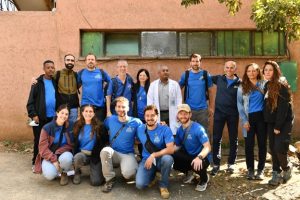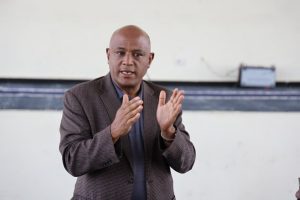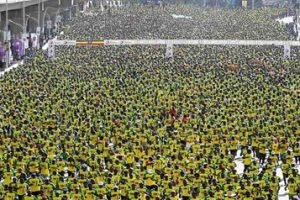Agricultural modernization hit off during the formative years of Emperor Menelik at the early decade of 20th century. The emperor embarked to establish new government structure which comprises the Ministry of Agriculture (MoA).
He also expanded education and health system, rail way and other infrastructural facilities. The introduction of tree planting by importing seedlings from abroad to overcome shortage of firewood in the capital indicted his sensitivity for environment.
According to the renowned historian Professor Bahiru Zewdie, it was Emperor Hilesilasie I who fully engaged in bringing socio economic reform through imported ideas. He was in a better position in organizational, human and other capacities than his predecessors.
Getachew Driba (PhD) is a researcher in economics. As to him, beginning from 1960 some agricultural growth was registered and the establishment of agricultural high schools and colleges with the support of USAID has contributed to the achieved socioeconomic progress.
In the later years, through bilateral and multilateral cooperation technical support was obtained for the implementation of agricultural improvement packages. Private companies involvement in foreign investments through establishing large commercial farming also gave a leap forward for raising productivity and export. But it was not a full-fledged one. It was practiced in small pocket areas of the country and as the tenure system was feudal and the majority of farmers were tenants,the experiment for transforming the sector remained futile.
According to the senior land researcher Desalegn Rahmato, in the late 1960s the emperial government showed interest for the expansion of largescale farms in the parts of rift valley ,in Setit humera, in Wolayta and Arba minch and Arsi Bale massifs.
Local and foreign investors utilized agricultural equipment and capital. In the riftvalley areas crops such as sugarcane, cotton, used as input for the emerging industries. In addition fruit and vegetables were produced.
Sesame, which mainly produced in the north western part of the country, was for export and the practice has still continued to date. Cash crop such as coffee was produced by private firms in the south western part of the country.
But as to Desalegn the rural capitalism that then flourished then its own limitation. It was exercised in a fragmented manner. The companies engaged in the farm were
suffering financial malnutrition and their employing capacity was insignificant. Moreover, the venture caused the eviction of peasants particularly in the Arsi Bale massif.
According to Getachew, the nationalization of the land by the Dergue regime in 1975 completely abolished the feudal’s land-owning system. As socialist oriented, the regime totally abandoned private investment on farm. The ill-defined property right of land made farmers demotivated to invest for their farm improvement.
Farmers were entitled only use rights in their feud and to speak honestly, nationalization of land changed farmers from being tenants’ of landlords to government’s tenants.
Such situation induced massive poverty and hunger throughout the country.During the initial phase of its power assumption from 1991 to 2010 the EPRDF
regime focused on poverty reduction and achieved a significant drop in the rate of poverty. In 2011 the regime announced its first five year Growth and Transformation Plan and following that, established the Agricultural Transformation Agency to support agricultural transformation.
The Agency introduced new techniques in small scale farms such as sawing grain in line-sowing system, clustering small plot lands to enhance productivity by planting similar crops. Preparing land before farming and maintaining the seedling and practicing modern way of harvesting and storing.
In addition to that, the utilization of agricultural inputs such as fertilizer, pest and herbicides expanded. Creating value chain for supplying products to market on optimum price can be mentioned.
According to the government’s report of the GTP performance, the nation has displayed a rapid and broad based and inclusive growth which led to substantial reduction of poverty. It further claimed that, the proportion of the population living below the national poverty line fell from 38.7 percent in 2003/4 to 23.4 percent by 2014 and real GDP growth rate averaged 10.1 percent and the share of agriculture and related activities in the overall GDP has declined to 39 percent by the end of 2014/15.
Crop and livestock sub sectors accounted 27.4 and 7.9 percent of GDP respectively. And the government announced that the decline in the share of agriculture is an indication of structural shift from agriculture to industry or service sector.
But many question the government’s claim in achieving structural shift.Their main argument is that, in fact,during the last decade and a half agriculture production increased but the achievement is gained not by rising land or labor productivity rather by expanding agricultural land at the expense of forest and grazing lands.
Labor and capital productivity is very low and the utilization of agricultural inputs such as fertilizer is below the required level even by sub Saharan African countries and still the sector remained subsistence and rain fed.
There are a significant number of land devoid farmers in the rural part of the country and had there been structural transformation, the stranded rural labor would have been absorbed by the emerging manufacturing industries flourishing in the urban centers.
Though the contribution of agriculture to the GDP declined, still 80 percent of the population earns its living from agriculture.
The rural Ethiopia is still underdeveloped as compared to the urban center in terms of infrastructures which are an indicators of development such as health, education and roads etc. With regard to modern energy utilization, 95 percent of the rural population leans on firewood and farm residues for cooking, heating and light. According to the government’s report, still 25 percent of the population is below poverty line.
Many suggest, as a remedial solution to achieve rural development and structural change land ownership must be clearly defined in a manner to attract private investment so as to reinvigorate the transaction value of land.
It should be noticed that bringing agricultural transformation while farmers are still leading subsistence-living is unthinkable.
The Ethiopian Herald May 3/2020





